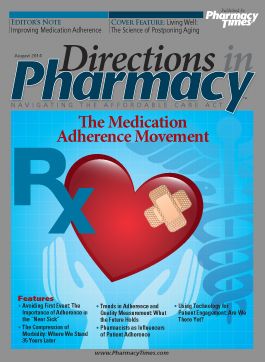Publication
Article
Pharmacy Practice in Focus: Oncology
Improving Medication Adherence: The Tipping Point
Medication nonadherence takes a toll on both quality of life and cost of care.

“Drugs don’t work in people who don’t take them,” said Alain Enthoven, a health economist and speaker at a pharmacy convention in the early 1970s. The point of his comment was that nonadherence—he called it “noncompliance” back then—was a problem looking for an owner.
Perhaps because he was speaking to a pharmacist audience, but probably because he realized that pharmacists were in the best position to do something about the problem, Enthoven suggested that pharmacists take ownership of that problem. Now, nearly 40 years later, pharmacy as a profession is acknowledging that there is a problem with how well patients take their medications.
Rather than putting blame on patients by calling them “noncompliant,” providers are acknowledging that the problem is multifaceted, and the preferred term being used today is “nonadherent.” We also have mounting evidence that nonadherence is taking a toll on both the quality of life and the cost of care. And with so many people being treated for chronic diseases, medication adherence is an even more critical problem for all of us to address.
The reasons for nonadherence vary among individuals, so a single approach will not work for everyone. Synchronization of medication refills, however, is a technique that seems to have a more universal benefit. Having a patient’s prescription refills occur at the same time makes sense, but unfortunately it generally didn’t happen. It required a change in the approach pharmacists take to the prescription filling process.
When a new prescription is written, it may require a willingness of the third party payer or the patient to allow partial fill with extra copay in order to get the refill synchronized on the same schedule. Pharmacists who promote a prescription synchronization program mention that it really does have a positive impact. It spreads out their workload more evenly, and patient satisfaction is higher, too. Medication therapy management is also more efficient because the pharmacist can have 1 training session to review the patient’s entire drug regimen.
Why did it take so long before the average pharmacist began to acknowledge that there was a problem and that they were willing to consider changing how they practice to incorporate programs to improve patient compliance? This is an example of how we can become comfortable with our routines. Rather than thinking about how we can improve our practice, we hold onto the old way because we like the routine.
Quality measures can show us that our current practices are not up to standards. Educational programs may help us accept that we need to reconsider our process. Technology advancement may be incorporated into the operation that enables process changes to occur. Together these activities eventually create a tipping point when the old way is no longer acceptable. The tipping point to improve medication nonadherence has occurred—and pharmacy is beginning to take ownership of the problem. As a result, solutions are being found.
Improvement in patient medication adherence has both financial as well as qualify-of-life benefits, and that is now generally recognized. The fact that pharmacists can help improve medication adherence is now accepted as well. Payers are even becoming willing to reimburse for adherence improvement programs. How have you changed your pharmacy practice activities so that you are able to help your patients take their drugs and get the full benefit of their medications?
Mr. Eckel is a professor emeritus at the Eshelman School of Pharmacy, University of North Carolina at Chapel Hill. He is emeritus executive director of the North Carolina Association of Pharmacists. A lifelong advocate for the profession of pharmacy, Mr. Eckel has lectured on pharmacy issues and trends in all 50 states and has traveled to 6 continents to promote, and educate audiences on, the role of the pharmacist.







